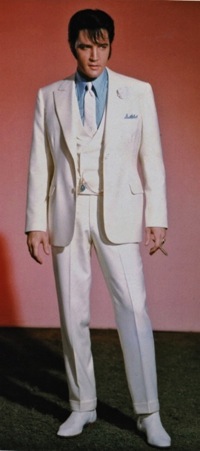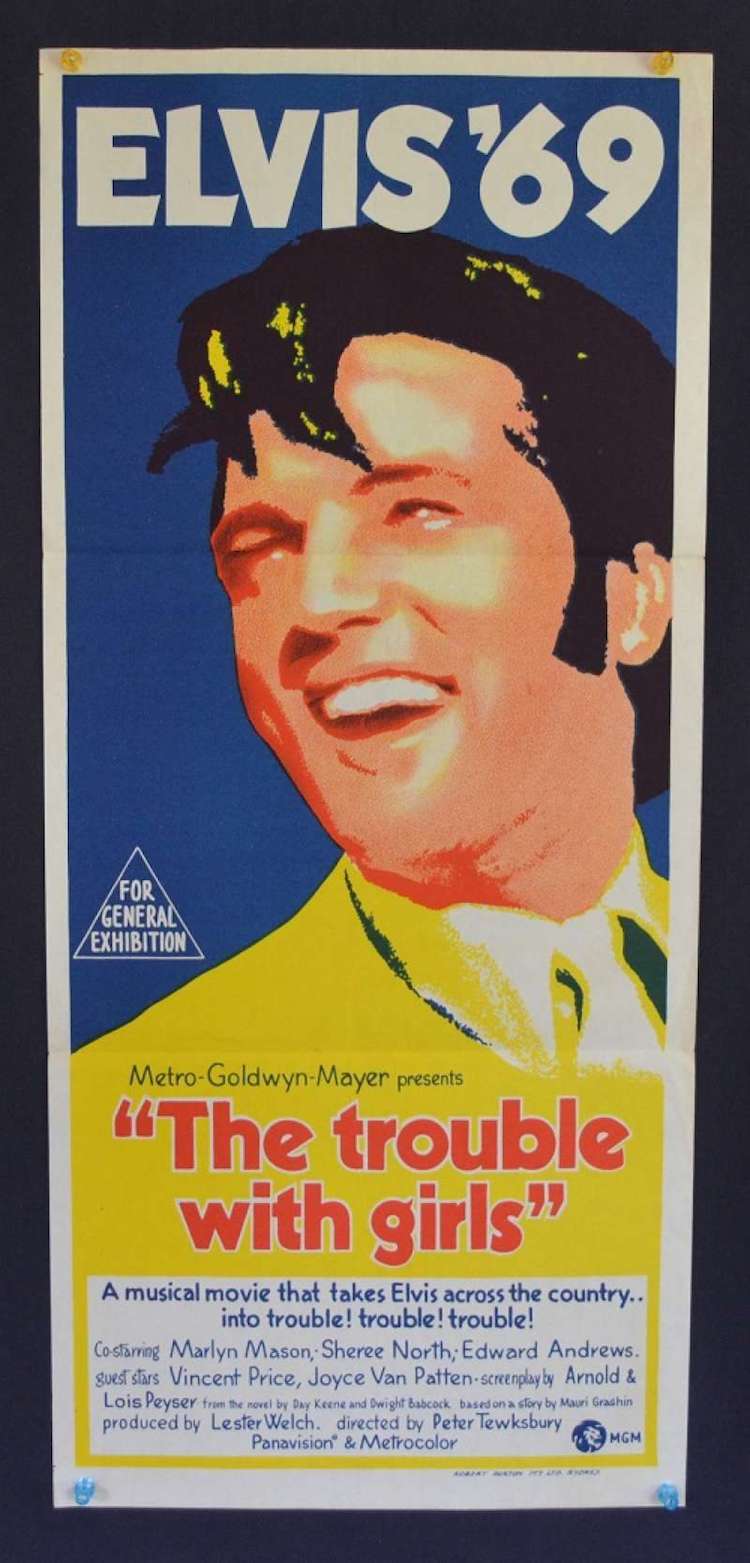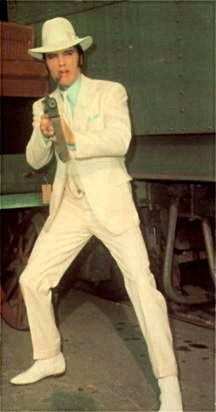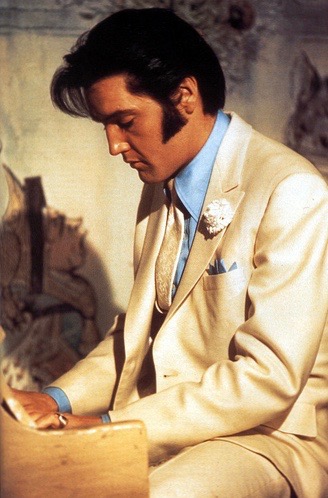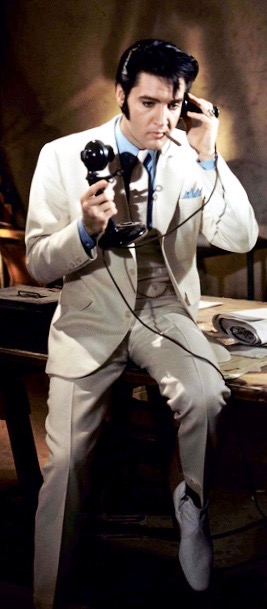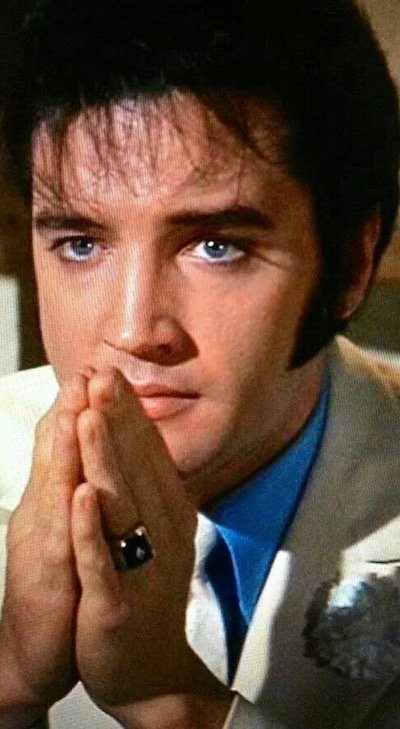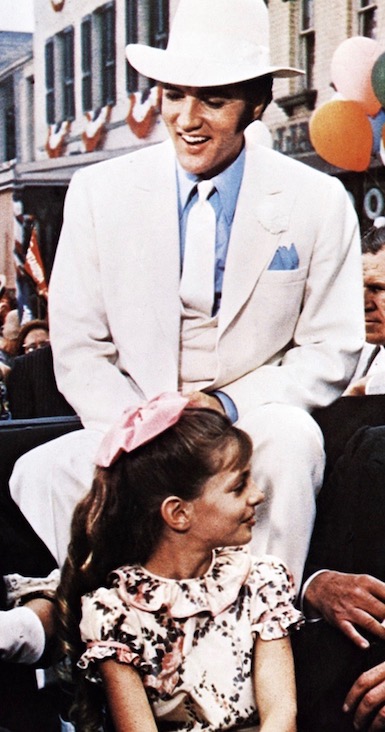Elvis History Blog
The Trouble With Girls
Elvis Movie #30
Metro-Goldwyn-Mayer | 1969
It’s a shame that in 1969 The Trouble With Girls was eclipsed by Elvis’ career change from Hollywood actor to stage performer. His next-to-last feature film is a unique and appealing picture on several levels. First, it was Presley’s only period piece, other than his three Westerns. It is set in 1927, shortly before the Depression put an end to good-feel institutions like the traveling Chautauqua shows. In addition to Elvis, the movie features a varied and talented ensemble, ranging from child actors Anissa Jones and Pepe Brown to up-and-comers like Marlyn Mason and Dabney Coleman to aging veterans like Vincent Price and John Carradine. Also, an assortment of camera angles and visual effects adds an artistic feel to the film.
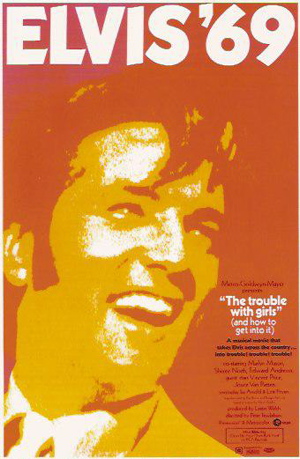
While overshadowed by Elvis’ return to the stage, The Trouble With Girls was not ignored by the nation’s major film watchdogs at Variety and The New York Times. Both papers printed reviews, and they could not have disagreed more about the movie’s merits. First out was Variety’s appraisal on May 14, 1969. Through the years, the entertainment journal had generally given Presley balanced, and sometimes mildly positive, reviews. This time, though, reviewer “Whit” gave Elvis Variety’s most negative film assessment of his career. The review opened as follows:
“Elvis Presley is lost in this one. Without star’s usual assortment of 10 to 12 songs, and numbers cut down to a bare three, picture has little to offer. Title suggests a gay comedy but it’s a mass of contrived melodramatics and uninteresting performances that do not jell into anything but program fare. All of the voltage of the Presley name will be required to get it over.”
• New York Times applauded The Trouble With Girls
The New York Times, which had always been fairly critical of Presley features, gave The Trouble With Girls the most positive treatment of all the Elvis films it had reviewed. Writer Roger Greenspun applauded the picture in his opening paragraph.
“Peter Tewksbury’s ‘The Trouble With Girls’ is a charming though ineptly titled comedy with one fortunate murder, several pleasant songs, Elvis Presley, and a huge cast all of whom, down to the last extra, seem willing to act their fool heads off. The plot, which hinges on what a small-town hard-luck woman (Sheree North) rightly does to a lecherous druggist (Dabney Coleman), deserves little attention. But the situation, a traveling Chautauqua making a small-town stand in the mid-1920’s, deserves a lot of attention—which it gets in a film that succeeds so amiably in its parts that the relative weakness of the whole doesn’t matter too desperately.”
However, Variety’s reviewer, obviously bothered by the film’s erratic pace, put the blame squarely on the writers. “The fault,” the review explained, “may lie in the multiplicity of writing credits which combine to bypass any degree of entertainment. Scripted by Arnold and Lois Peyser from a novel by Day Keene and Dwight Babcock, based on a story by Mauri Grashin, somewhat in the transition to the most mediocre of narratives and action results.”
• Greenspun praised film’s historical backdrop
At the Times, though, Greenspun was willing to overlook the uneven storyline in deference to the film’s realistic setting. “The evocation of 1920’s Americana is exceptionally even-handed, detailed, affectionate, without sentimentality, funny without condescension,” extolled Greenspun. He went on to give several specific examples from the film.
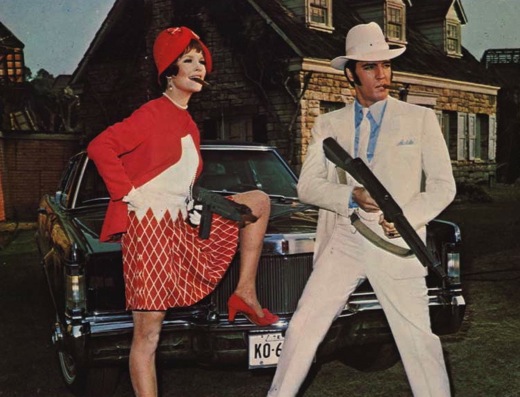
“A package of terrific foil-wrapped fireworks, spiffy slang, a talent competition in which six boys play ‘America’ in unison on kazoos, a female English Channel swimmer’s lecture—demonstration showing her audience how to smear axle grease as body protection—so many mementos that serve to enliven the present as much as they recall the past. ‘The Trouble With Girls’ is an immensely active film that seems virtually to live within the styles and language of its period.”
• The Trouble With Girls started funny, turned deadly serious
In terms of mood, The Trouble With Girls can be divided nearly equally into two parts. The opening half is comedic in tone, as directly Tewksbury strives mightily to establish the setting and his characters. Just after the half-way point, however, the mood turns suddenly serious with the murder of the lecherous druggist, played by Coleman. The ending is bizarre, to say the least, with Elvis convincing Miss North to confess in front of a tentful of paying customers.
The far out closing sequence attempts to make viewers feel good about the tragedy. The druggist Coleman got what was coming to him, and the misused Miss North not only will get off on a self-defense plea, but will also get “a whole lot of money” provided by Elvis, the Chautauqua manager. In the end the show train pulls away with a financial agreement guaranteeing a return engagement in the town the following year. It’s a feel-good ending all around … I guess.
Elvis makes his first appearance when he steps off the Chautauqua train in the opening scenes of The Trouble With Girls. Mature at age 33, trim, dressed in a white suit, smiling, with a thin cigar in his mouth, Presley never looked more handsome in his big screen career. His acting work is steady, confident, and convincing throughout. Variety, however, judged that Elvis played it “straight, having little to do.” At the Times, Greenspun was kinder. “Elvis Presley performs too,” he wrote, “with a reasonably developed characterization as the chautauqua company manager, and he sings very well.”
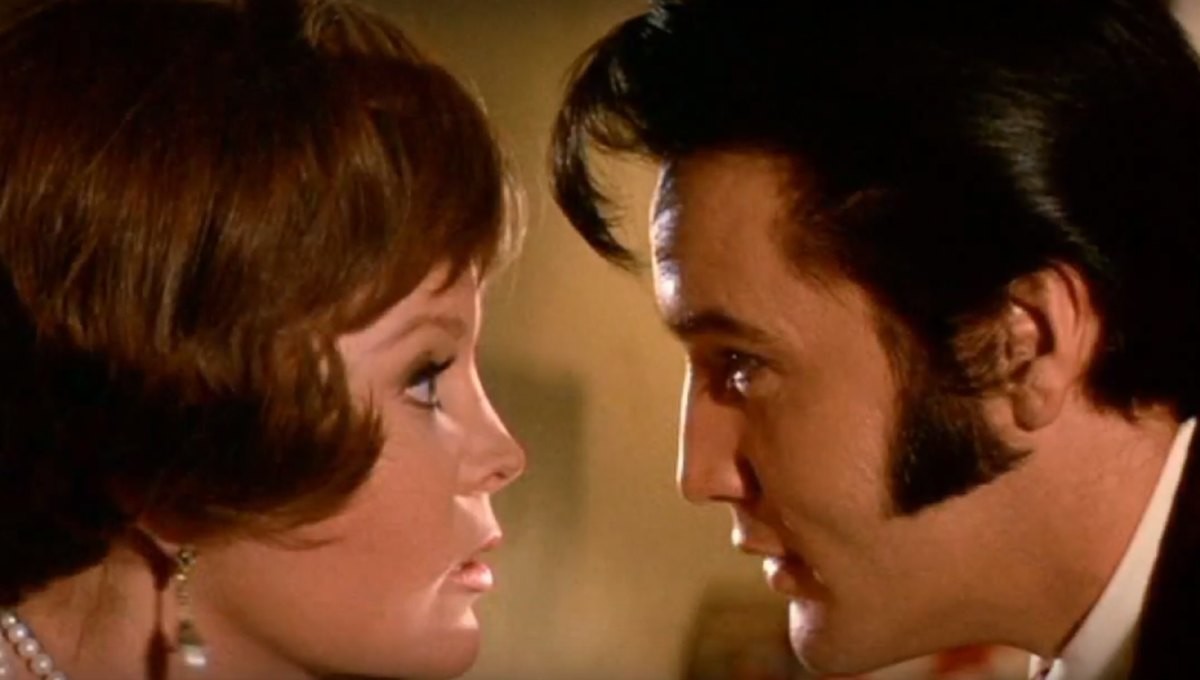
• The Trouble With Girls an un-Elvis-like Elvis movie
There is no title vocal, and Elvis sings only three songs and a couple duets, all but one bunched into the film’s final 20 minutes. Musical moments are also doled out to various other performers, including Miss Mason, the two children, a hillbilly group (identified in the cast credits as The Farmhands), and a quartet of college boys. This, along with Presley’s near absence from the film’s first half hour, makes The Trouble With Girls the most un-Elvis-like Elvis movie ever made.
Of the supporting cast, Variety praised Vincent Price and the child duo of Anissa Jones and Pepe Brown. The paper panned the two leading ladies, however, accusing Sheree North of overacting and contending that Marlyn Mason spent most of her time “mugging.” Keeping with the positive tone of his review, Greenspun praised all the actors. “The whole cast is so attractive,” he noted, “that even the unpleasant characters (Dabney Coleman and Med Flory) please so far as their roles allow. Marlyn Mason as the not-quite-romantic lead seems to me the best of the women, an excellent comedienne in a film that demands performance more than presence from its actors.”
• From the start, film was a footnote to Elvis’ past
The Trouble With Girls was already a relic of Elvis Presley’s past when MGM released the film nationwide on September 3, 1969. Just three days earlier Elvis had completed his triumphant, month-long opening engagement at the International Hotel in Las Vegas. His Hollywood career was over, and for the remainder of his life he would be known more as a stage performer than as an actor. However, The Trouble With Girls was one of two films in the can for Presley movie fans to enjoy before his string of 31 Hollywood features came to an end. — Alan Hanson | © September 2008
Go to Elvis Movies
Go to Home Page
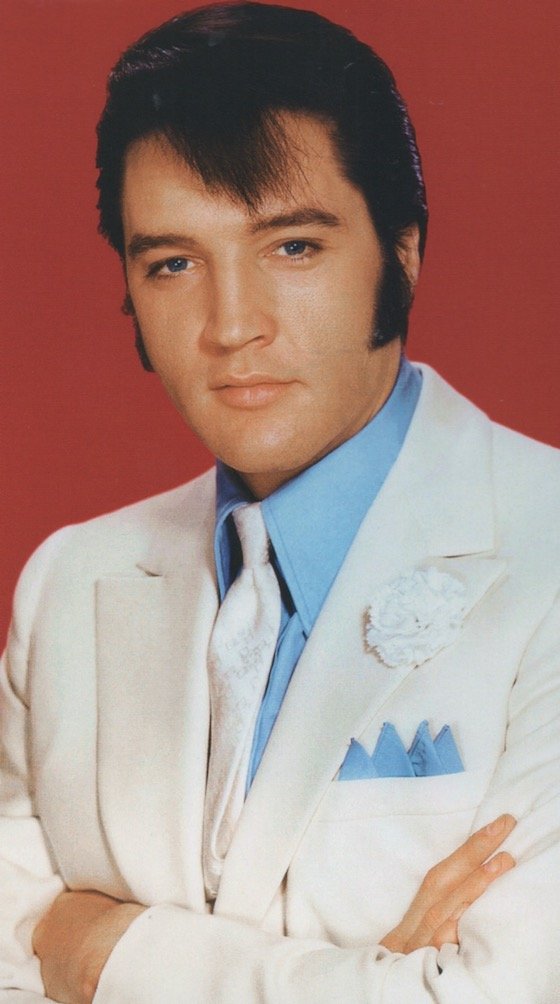
"Mature at age 33, trim, dressed in a white suit, smiling, with a thin cigar in his mouth, Presley never looked more handsome in his big screen career."
